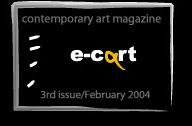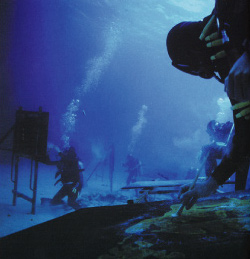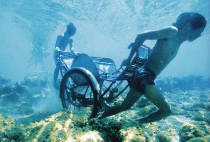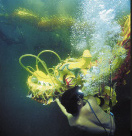|
|
|
||||||||||||||||||||||||||||||||||
|
|
 |
|
 |
 |
|
||||||||||||||||||||||||||||||
 |
|
 |
|
||||||||||||||||||||||||||||||||
|
|
|
||||||||||||||||||||||||||||||||||
 |
|
 |
|
||||||||||||||||||||||||||||||||
|
|
 |
|
|
||||||||||||||||||||||||||||||||
|
|
|
||||||||||||||||||||||||||||||||||
|
|
 |
|
|
||||||||||||||||||||||||||||||||
|
|
|
||||||||||||||||||||||||||||||||||
|
|
 |
 |
|
||||||||||||||||||||||||||||||||
|
|
 |
 |
 |
|
|||||||||||||||||||||||||||||||
|
|
|
||||||||||||||||||||||||||||||||||
|
|
 |
|
|
|
|
|
 |
|
|||||||||||||||||||||||||||
|
|
|
|
|
||||||||||||||||||||||||||||||||
|
|
|
||||||||||||||||||||||||||||||||||
|
|
 |
|
|
|
|
||||||||||||||||||||||||||||||
|
|
|
|
|||||||||||||||||||||||||||||||||
 |
|
||||||||||||||||||||||||||||||||||
|
|
|
||||||||||||||||||||||||||||||||||
|
|
 |
|
|
||||||||||||||||||||||||||||||||
|
|
 |
|
|
||||||||||||||||||||||||||||||||
|
|
 |
|
|
||||||||||||||||||||||||||||||||
 |
|
||||||||||||||||||||||||||||||||||
 |
|
||||||||||||||||||||||||||||||||||
|
|
 |
|
|
||||||||||||||||||||||||||||||||
|
|
|
|
|||||||||||||||||||||||||||||||||
|
|
|
|
|||||||||||||||||||||||||||||||||
|
|
|
|
|
|
|
|
|
|
|
|
|
|
|
|
|
|
|
|
|
|
|
|
|
|
|
|
|
|
|
|
|
|
|
|
|
DD: I would like to make a short glance on first phases on your work that
comprehend a passage from your formation as a painter to installations to
film making. How this occurred?
JNH: This transition from painting to installation to video - but here I would like to precise that I don't like to call my work video, I call it Memorial - this transition was like a natural process. I was working on the idea of installation and than I started to think how could I make an installation in outer-space, in a zero-gravity space. I wanted to do something up in space to see what could happen and also imagine what could happen if you are a painter and you try to paint in the zero-gravity condition… how would the paint behave. This kind of thinking come back to me when I was given the opportunity to make a work for Yokohama Triennial some years ago. For that occasion I came up with concept of creating a museum dedicated to cyclo. Prior to making video works I was designing and redesigning cyclos and making photographic works based on cyclo history. I wanted to create a museum space to demonstrate a kind of cyclo history, since it doesn't have an honour to be presented in this kind of context. But to have a large museum space within a Triennial was of course impossible because of great number of involved artists, so curator asked me to do my project within just one space. One of the museum spaces that intrigued me a lot was a memorial room. The project for the memorial room consisted in a performance: me performing in a big water tank. That was the original idea of using water. The tank was supposed to be 6 by 9 meters, and I was supposed to be inside pedalling the cyclo, floating in the mid water. That was the original plan, but many different issues came up concerning security and budget, so we again had to modify the project and that's how we ended up filming under the water.
DD: Why have you been interested in working with this subject of cyclos and cyclos history?
JNH: The idea of cyclo came because I wanted to connect boat people and cyclo drivers lives, as a counterparts. Boat people had intention to leave, at least they tried to go away even if they failed, got caught and returned to country, while the others did not even tried. That's where they were opposites.
DD: It's like you have been dealing with "being captured" kind of a state…
JNH: Yes, and that brought me closer to the stories of cyclo drivers. I wanted to discuss that kind of phenomena.
DD: They are on the lowest social grade on the social hierarchy in your country? And are they still existing or in the way of extinction?
JNH: Well, both. And this were the reasons that led me to start thinking about cyclo museum. Of course that is not possible at present stage, the government do not provide for them in any manner. But the government took something from them: it took their identity, all that they had before the war. People who became cyclo drivers were those who lost everything, so they were obliged to do most humble job in order to survive. But before they have been doctors or educators…
DD: Actually the film has a very simple structure, a simpler narrative structure
than those which follows. I was impressed by the simplicity of the actions.
On symbolical or interpretative level its like a fight to move forward, make
some progress, and at the same time fight for the life, survival, for each
breath, oxygen, moving vertically in this double direction: ascending and
descending.
In following films you are developing more a story. For instance "Happy
New Year - Memorial Project for Vietnam II" has a specific story behind?
JNH: This work talks about a specific time in history, situated in '68, more precisely a surprise attack by the North. I used that to refer to boat people, because this was decisive point in the war - at least according to some founts (there are also those texts that argues that the attack was announced and that it wasn't a turning point for the war). But I think that after that attack the Americans started to rethink their position in Vietnam, to ask why they are there and begin to pull out the troops. And the citizens started to react on how the war was changing, and perhaps the South was going to be took over by the North, so I used that as a starting point, to come to the question of boat people as those who were trying to get out. My research on history is not aiming to be precise. I'm more interested in taking certain events, extracted from the historical context and trying to make a story, to visualise how it can be in the creative sense.
DD: You pointed out before that you prefer defining your videos "Memorials". Could you focus more about that, what does it means to be "Memorials".
JNH: "Memorial" is like a ceremony. I like that the viewers of my works have a feeling of participation - I prefer that they are participants of a ceremony than observers of ceremony. In the case of film or video one inevitably ends up being viewer. My perspective, my approach in creating my work is that I - through the process of making - am also participant of memorial ceremony and performers/divers are part of the ceremony and hopefully the viewers can feel like participants too.
DD: "Okinawa Memorial" is the most recent project you did. It has just been presented for the first time in the MACRO - Museum of Contemporary Art of Rome. Could you tell what is this work about? What is the story on the background and what is the issue this work is dealing with?
JNH: This piece went through many stages. It was conceived three years ago,
just after making a first film, first memorial, which is the cyclo piece.
But first of all maybe I should explain how I work. I'm not a film maker,
I'm not a video maker, I didn't study film or video making. I studied painting.
So my approach to my work is as if I'm painting. I don't have a storyboard
but general concept, general actions, scenes that I would like to capture.
When is shooting time I shoot whatever is taking place in that moment. When
I'm editing, that is really the time when I begin to create a story.
DD: What is the story of this work?
JNH: "Memorial project for Okinawa" is also connected to previous
works that I have done, in particular with "Memorial project for Vietnam".
The full title of this work is "Ho! Ho! Ho! Marry Christmas! Battle of
Easel Point. Memorial project for Okinawa". So there are three sections
that correspond to three titles that combined form a main title.
Ho! Ho! Ho! Marry Christmas! Refers to Santa Claus, it's a phrase that is
often used in Christmas celebrations. But I am using this phrase to refer
to one part of history of war, more precisely to the attack to North Vietnam
planed by Americans. This attack was called "The Christmas Bombing"
and it happened in the December of 1972. That idea I began to develop in this
piece and than there came up a connection with Okinawa, which was an American
base where the bombers B-52 were settled and from where they were flying of
to bomb Vietnam. That is another aspect I wanted to refer to.
"Ho! Ho! Ho!", the beginning of the title is also a reference to
the name of Ho Chi Min, a communist leader. It is a kind a play with this
phrase and the name.
You can see in the film that there is a snow, but it is made of air bubbles
(realised in 3-D graphics). This air bubbles make a very important part of
my work, they appear in other pieces as well in different manners, and they
symbolise the existence of life. To exist we have to breath and that is the
core of my work.
DD: You are referring also to something that is very present in our collective imaginary, to all those things linked to Hollywood film production and American representation of Vietnam war. Through American film production we can follow different aspects of dealing with the conflict: from war propaganda in the first films coming out in the time that the war started to following processes that are dealing with metabolisation, critique and defeat in later movies up to recent production. You are using some of the "heroes" of American film production; it's their faces depicted on the canvases…
JNH: Yes, the action that the divers are performing in the film is painting of the human portraits on the canvases fixed on the easels under the water. The portraits are those of movie stars that acted in films about the Vietnam war. The original idea for me was to find a way to exchange the star of the Vietnamese flag which is a yellow star on the red background with fifty stars of the American flag. So I would have fifty small Vietnamese flags within one big American flag. But this looked than like a bit too obvious and also maybe not a nice way to discuss the issue. So I decided to create a story, involve fifty divers with fifty easels, posed in a way that they surround one central big yellow star that is floating in the mid water. That star represents a star of Vietnam and fifty divers look the star in the centre and start to paint it. Each has a red canvas and paints with a yellow paint. What they pain is the star, but the Hollywood star.
DD: How much you want that your work has political connotations?
JNH: My pieces may have a sense of politics but they are not political pieces. Even this last piece for example, deals with America, Vietnam and Okinawa, but it for me is more about the people who are stuck in-between. I want to show their struggle, which of course can be accompanied by political issues, but basically it is about the essence of the struggle for life.
|
|
|
||||||||||||||||||||||||||||||||||
|
|
 |
|
 |
 |
|
||||||||||||||||||||||||||||||
 |
|
 |
|
||||||||||||||||||||||||||||||||
|
|
|
||||||||||||||||||||||||||||||||||
 |
|
 |
|
||||||||||||||||||||||||||||||||
|
|
 |
|
|
||||||||||||||||||||||||||||||||
|
|
|
||||||||||||||||||||||||||||||||||
|
|
 |
|
|
||||||||||||||||||||||||||||||||
|
|
|
||||||||||||||||||||||||||||||||||
|
|
 |
 |
|
||||||||||||||||||||||||||||||||
|
|
 |
 |
 |
|
|||||||||||||||||||||||||||||||
|
|
|
||||||||||||||||||||||||||||||||||
|
|
 |
|
|
|
|
|
 |
|
|||||||||||||||||||||||||||
|
|
|
|
|
||||||||||||||||||||||||||||||||
|
|
|
||||||||||||||||||||||||||||||||||
|
|
 |
|
|
|
|
||||||||||||||||||||||||||||||
|
|
|
|
|||||||||||||||||||||||||||||||||
 |
|
||||||||||||||||||||||||||||||||||
|
|
|
||||||||||||||||||||||||||||||||||
|
|
 |
|
|
||||||||||||||||||||||||||||||||
|
|
 |
|
|
||||||||||||||||||||||||||||||||
|
|
 |
|
|
||||||||||||||||||||||||||||||||
 |
|
||||||||||||||||||||||||||||||||||
 |
|
||||||||||||||||||||||||||||||||||
|
|
 |
|
|
||||||||||||||||||||||||||||||||
|
|
|
|
|||||||||||||||||||||||||||||||||
|
|
|
|
|||||||||||||||||||||||||||||||||
|
|
|
|
|
|
|
|
|
|
|
|
|
|
|
|
|
|
|
|
|
|
|
|
|
|
|
|
|
|
|
|
|
|
|
|
|